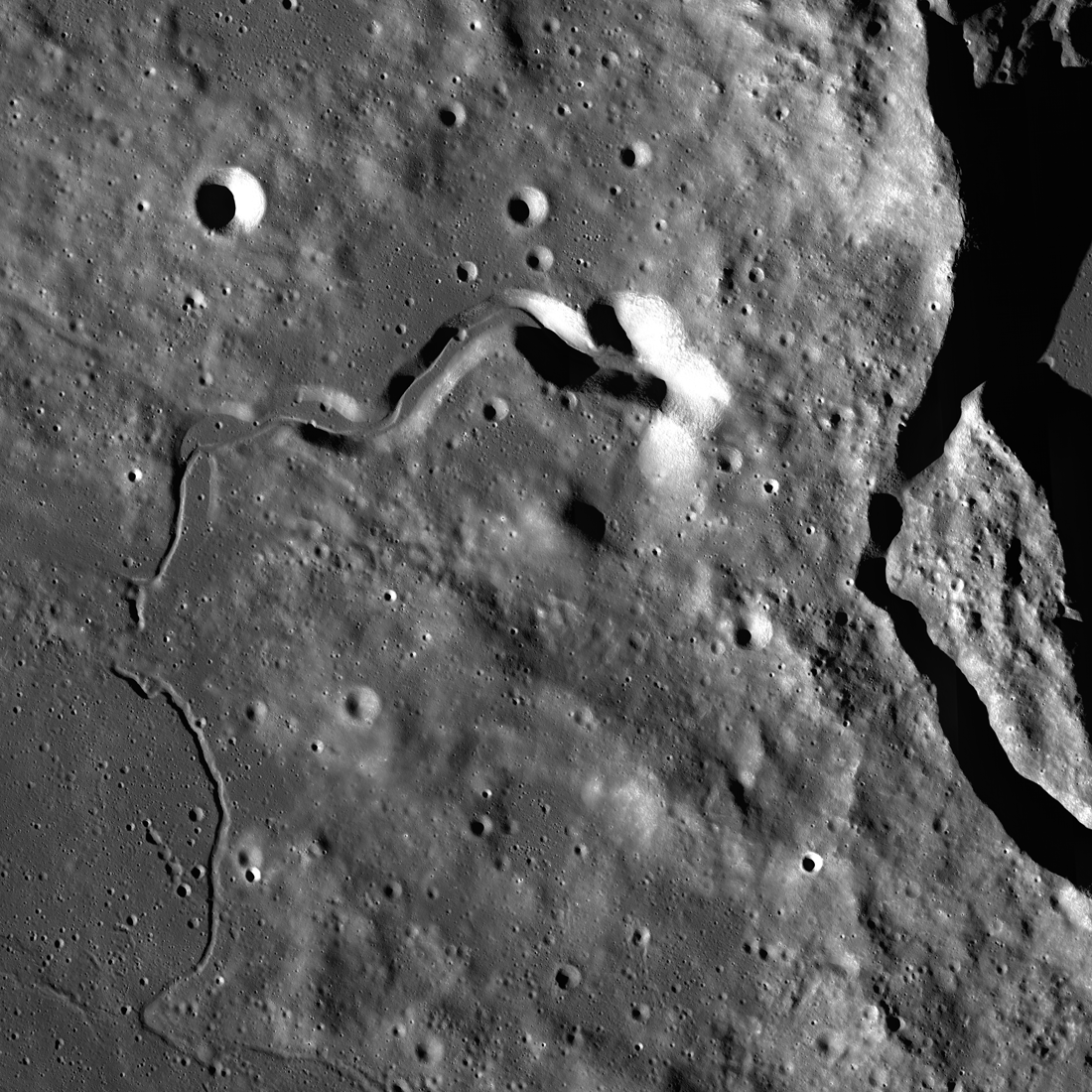
Plato crater is prominent, yet from our vantage point on Earth we never truly see it as it is. That's because it is located far enough north of the lunar equator (center latitude 51.62°N, center longitude 350.62°E) on the curving surface of the spherical Moon that it appears foreshortened. Plato is round like most other impact craters, but from Earth we see it as an oval aligned east to west.
A dark floor makes 101-kilometer-wide Plato crater stand out against a light-colored lunar highlands background. Plato crater is also prominent by association; the crater is located just north of 1145-kilometer-wide Mare Imbrium. A small part of this mare is visible at lower left in our Featured Image. Mare Imbrium is made up of many basalt layers laid down by violent volcanic episodes over a span of about 1.5 billion years. The basalts fill the Imbrium Basin, which a large asteroid or comet impact excavated about 3.85 billion years ago. When we look at a bright full Moon, round dark Mare Imbrium captures our gaze, then we see Plato crater, which is estimated to be about a hundred million years younger than the Imbrium Basin.
The western rim of Plato crater — visible on the east (right) side of our Featured Image — includes a 23.4-kilometer-wide slump block. The roughly triangular piece of rim broke free when an asteroid impact excavated Plato crater. Its eastern edge stands up to 1.4 kilometers above the crater's dark floor. Part of the floor is visible in the image just above right center, east of the long shadow of the rim.
The floor is made up of two basalt units of slightly different colors and compositions. They were probably born of separate eruptions around 2.82 billion years ago. That makes them relatively young among lunar basalt units. The first unit forms the floor in the southeast part of the crater. The other makes up the rest of the floor. These young basalts might cover layers of older basalts.
The dark floor of Plato crater is only one sign of past volcanism visible in our Featured Image. The basalt surface of the part of Mare Imbrium we can see is about 3.52 billion years old — that is, about 700 million years older than the Plato crater floor basalts.
We consider the Greek philosopher Plato, for whom the crater is named, to have lived long ago — he was born in the fifth century BC. It is humbling to compare the span of human history with the time scale we use routinely as we work to understand the geologic history of the Moon.
Near the center of the image, at 51.53°N, 347.22°E, lies a volcanic vent 5.7 kilometers wide and about 830 meters deep. An unnamed rima — a kind of lunar canyon often called a rille — emerges from the vent and winds west and south. The lava that erupted from the vent might have pooled, forming a lava lake, before it broke out and flowed down into Mare Imbrium, carving the rima through melting and erosion.
We do not know when the vent was active. Scientists studying the Moon have not yet determined its age. It could be that lava flowed from the vent, pooled to form the lake, carved the rima, and flowed onto Mare Imbrium 3.52 billion years ago — that is, that it contributed to the basalts in the part of Mare Imbrium seen here.
It is also possible that, when the vent was active, the same type of lava erupted in Plato crater. Vent and crater are, after all, quite close together; just 15 kilometers separate them. Low-viscosity lava might have burst through fault fractures in the crater bottom, which the impact that excavated the crater had made fragile and thin. If this hypothesis is correct, then the ancient basalt that formed when the lava cooled would underlie the two younger basalt units we now see on the floor of Plato crater. One way to test this would be to visit the crater with a drill designed to dig deep and collect rock cores all the way through the basalt down to the original crater bottom.
Today's Featured Image is composed of 10 images, for it is part of a controlled and corrected mosaic made up of five high-resolution LROC NAC image pairs. NAC controlled feature mosaics enable the viewer to see details down to the scale of individual boulders. To observe the fine details, zoom in on the zoomify image below.
Related Featured Images:
The Diversity of Basaltic Lunar Volcanism
Marius A
Balcony Over Plato
Lava Flows Exposed in Bessel Crater
Sources:
Hiesinger, H., Jaumann, R., Neukum, G., and Head, J. (2000), Ages of Mare Basalts on the Lunar Nearside, Journal of Geophysical Research 105, 29,239-29,275
Hiesinger, H., Head, J., Wolf, U., Neukum, G., and Jaumann, R. (2008), Ages of Basalts on the Lunar Nearside: A Synthesis, Lunar and Planetary Science XXXIX
Published by David Portree on 18 January 2019